Sponsored by accessiBe
Featured image by Shahid Abdullah from Pixabay
In this guide, we cover what the ADA is all about and why you need to start using a web accessibility solution like accessiBe.
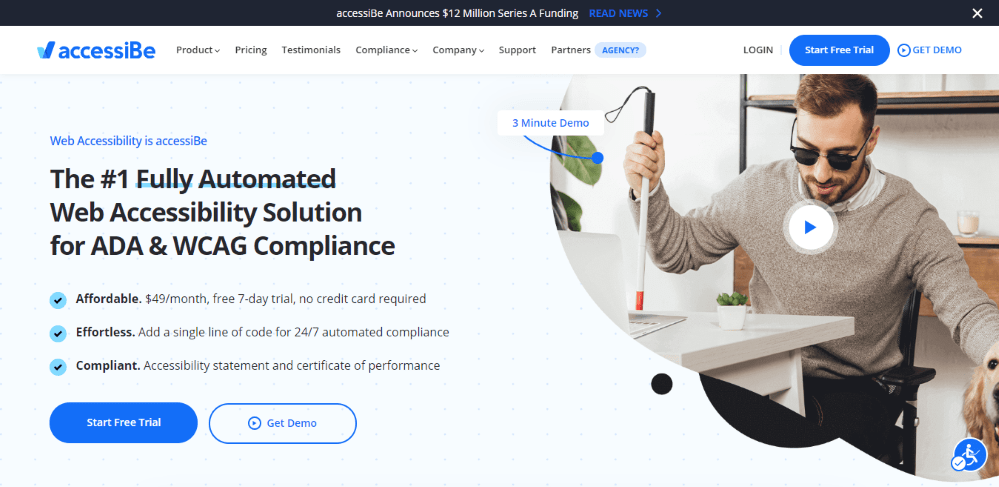
Making Your Real Estate Website Easily Accessible with accessiBe
Whether you’re a real estate agent, broker, or property handler, you need a website to showcase your property listings effectively.
RELATED ARTICLE: WEBSITE PERFORMANCE: MAKING IT WORK FOR YOUR BUSINESS
However, having a professional-looking website isn’t enough. You need to ensure your site is accessible to every one of your web visitors—even to those with disabilities. Otherwise, you’ll violate the Americans with Disabilities Act (ADA).
In this guide, we’ll cover what the ADA is all about and why you need to start using a web accessibility solution like accessiBe.
Overview: Real Estate ADA Compliance and Web Accessibility
The ADA ensures that all people, including persons with disabilities (PWD’s), can access public accommodations. Additionally, it ensures that PWD’s can access other aspects and services physically, including, as the DOJ recently ruled, online spaces.
That includes websites by apparel stores, restaurants, hotels, creative studios, clinics and hospitals, gymnasiums, real estate agencies, and many others.
These companies should observe web accessibility. This is about making their websites, apps, and other programs easy for disabled people to use them.
Otherwise, anyone, especially PWD’s, can sue or file a complaint. Your business can lose $35,000 to $100,000 worth of penalties and settlement fees, besides tarnishing your business reputation.
RELATED ARTICLE: MAKE YOUR WEBSITE ADA COMPLIANT WITH ACCESSIBE
Web Accessibility Lawsuits in the Real Estate Industry
If you think your real estate company has little chance of receiving accessibility lawsuits, think again.
In Florida, for instance, Florida Realtors reports numerous members and a large local association receiving demand letters threatening litigation for inaccessible sites. (It’s probably worth mentioning here that Florida has the third-highest number of lawsuits in the US.)
Another example is Compass, which was slapped with lawsuits for creating barriers to its visually impaired clients. This included the absence of elements for screen reading software to relay.
Which is why, to avoid possible litigation, the National Association of Realtors (NAR) supports the pursuit of site accessibility among real estate agents and brokers.
Plus, at the May 2016 NAR conference, MLS CEO Shelley Specchio urged the real estate industry to take accessibility seriously. In her talk, she shared how her MLS listing service got a disability discrimination charge.
Besides the legal threats, though, accessibility helps your real estate company streamline and provide excellent online services. This motivates clients to revisit and recommend your site.
This results in a wider client base, better client relationships, and more satisfaction. Plus, your site will enjoy increased traffic, more site activity, and potential sales, among other benefits.
Finding the Best Assistive Technology for ADA Compliance
To make your site and online services accessible, the ADA permits and mandates the use of any assistive technologies as necessary.
For websites, this usually means redesigning your site. In other words, you’ll need to integrate elements that can help make your content more readable. Your videos and photos will need to be less glaring. And there may be other elements your web designer will need to address as well.
However, manual redesigning, including installing several plugins, costs up to $50,000. Nor does this figure include maintenance. Plus, a project such as this can take six months or more to complete. Even then, it will fulfill only 15 percent of the ADA requirements.
RELATED ARTICLE: WEBSITE DESIGN IS CRUCIAL FOR YOUR STARTUP’S SUCCESS
Additionally, when your site updates, all that hard coding can vanish. It’s unsustainable, inefficient, and expensive.
Thankfully, there’s a better way: through automated accessibility technologies such as accessiBe.
accessiBe: The Easy Way to Achieve ADA Compliance
accessiBe is the first automated, AI-powered accessibility solution. This makes it the leading innovative technology in the web accessibility market.
An all-in-one solution, accessiBe offers several instant site adjustment features. Its AI adds aria attributes, scans images, and inserts alt tags. Moreover, it automatically edits the code to make your site navigable through keys.
Installing accessiBe is also easy-peasy. You only need to insert a single line of JavaScript code, and the accessibility interface appears instantly.
accessiBe’s AI studies your site, fulfills ADA requirement gaps within 48 hours, and scans it every 24 hours to ensure you’re always compliant.
One real estate company named Cagan Management Group, for instance, testifies to accessiBe’s cost-efficiency and effectiveness, saying it has integrated the solution in 25 managed websites in 6 months.
To understand how accessiBe works, let’s look at its features and how it modified Cagan’s website. (Keep in mind, that it can do the same for yours.)
We’ll use Cagan as an example for you to view and compare the changes the accessiBe program made. Cagan’s site initially looked like this:
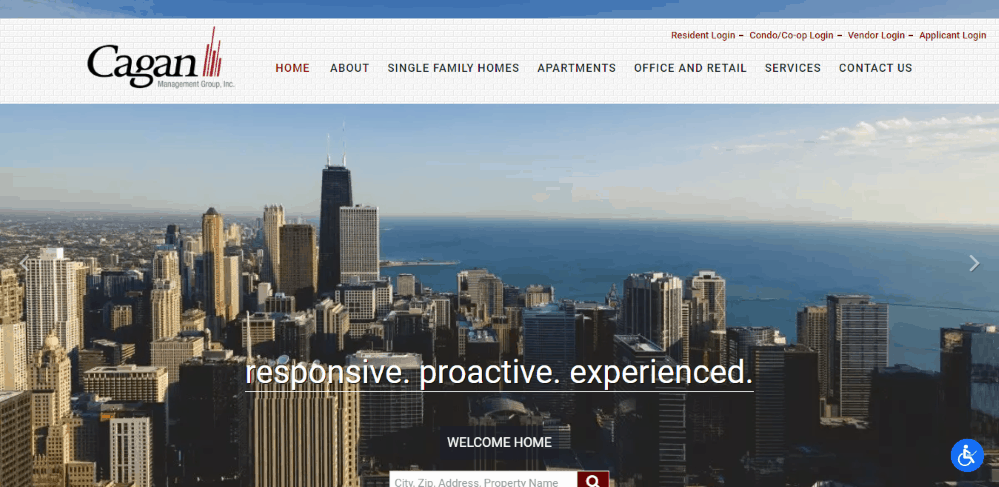
Now, it’s worth noting that the site modifications applied are not permanent. They remain only in your users’ browser cookies and on their devices’ screens.
The changes don’t affect how your other clients see, use, and experience your website. Once users disable their selected adjustments, your site goes back to how it originally looked.
accessiBe Features
accessiBe provides accessibility profiles that, when selected, automatically apply the site modifications suitable to the disabled person’s needs.
It has the Epilepsy Safe Profile, for instance, which turns off all flashing animations, including videos. Also, it reduces color to avoid triggering seizures for those with photo-sensitive epilepsy.
Applied to Cagan’s website, it looks like this:
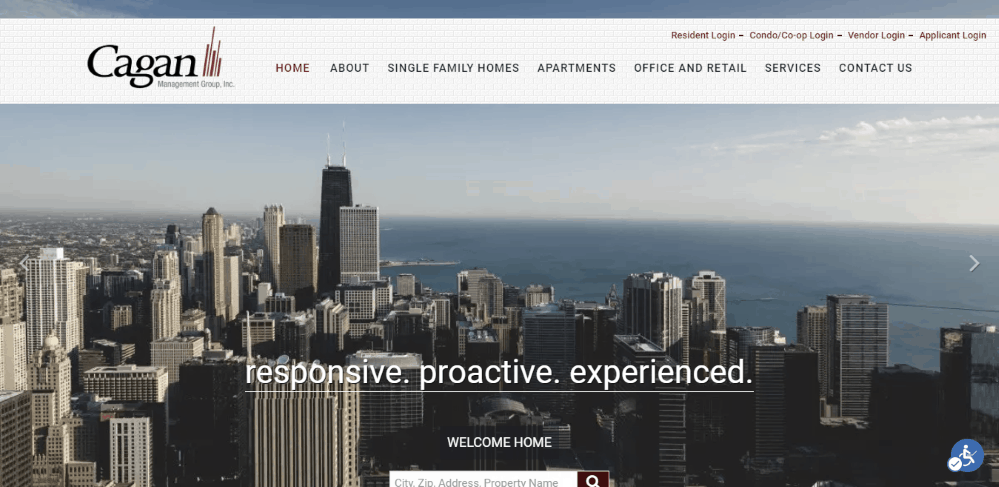
The Visually Impaired Profile enhances the site’s visuals. This includes enlarging and magnifying text, which helps users with glaucoma, degrading eyesight, and others to read your content better.
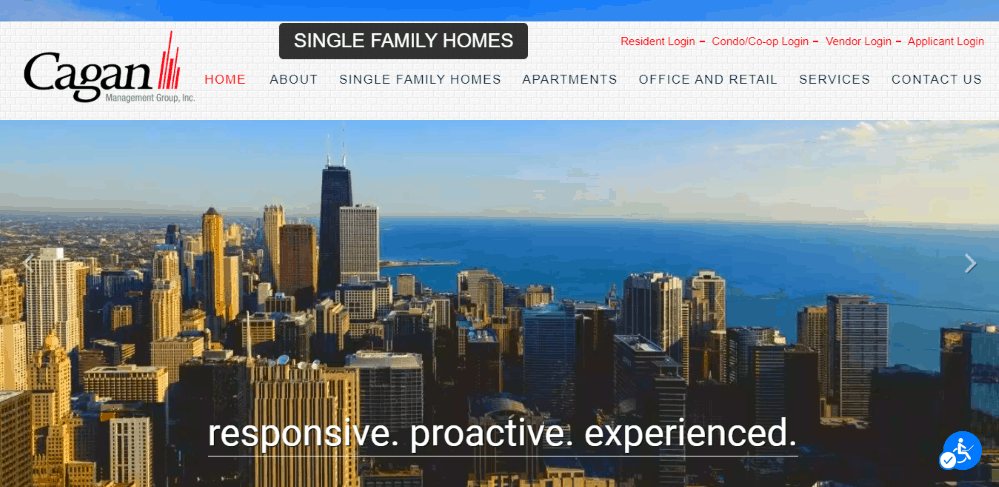
On the other hand, selecting the Blind Users profile adjusts your site to be compatible with your blind clients’ screen reading software, such as JAWS and VoiceOver.
This aids the users in reading your content. This includes photo and image descriptions created by accessiBe’s AI, through Braille or text-to-speech engines in their screen readers.
Turning on the Cognitive Disability Profile lets clients with dyslexia, autism, and other related disabilities focus on your site’s essential elements, such as texts and titles with links.
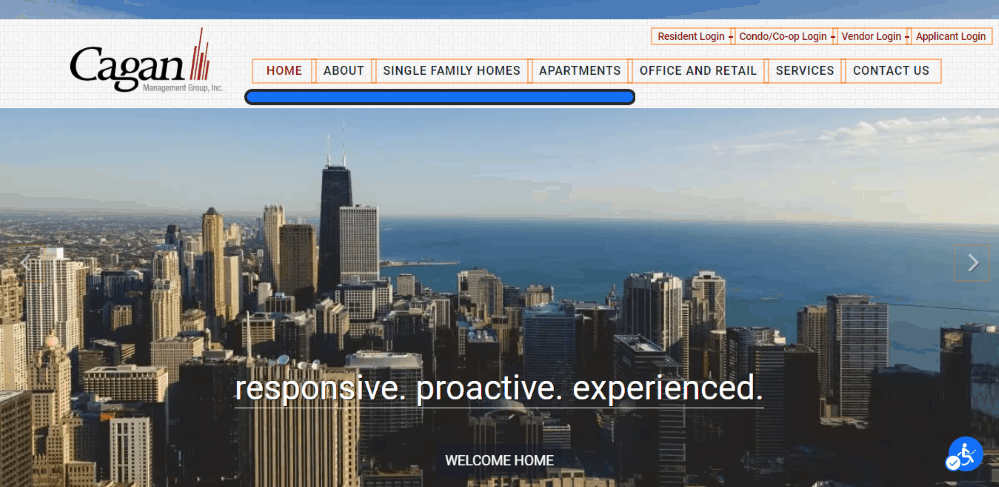
By minimizing distractions, the ADHD Friendly Profile assists visitors with ADHD and other neurological disorders in reading, browsing, and focusing on significant site elements.
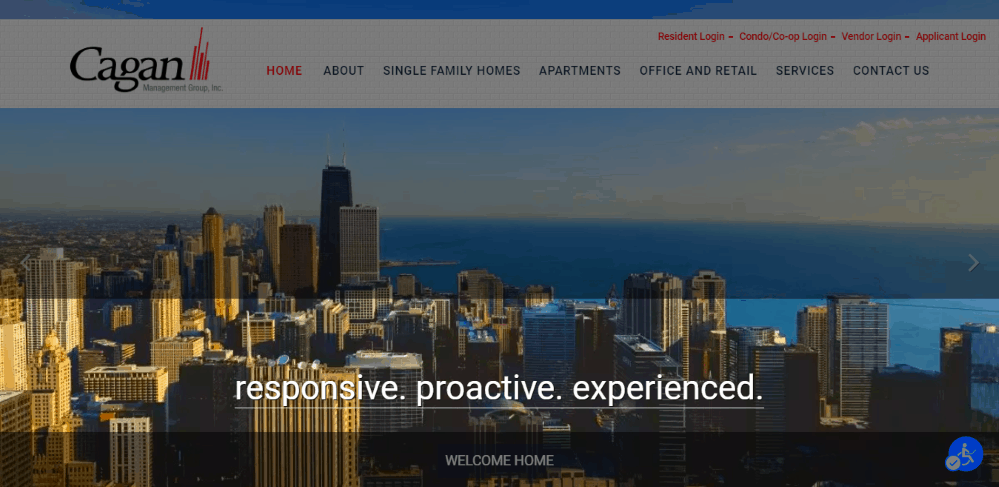
Finally, the Keyboard Navigation profile enables motor-disabled visitors to use and navigate your site with Tab, Enter, and Shift+Tab, and shortcut keys such as “M” for menus.
Your clients can also manually apply changes such as content scaling, background color adjustments, and so on. They can also use other features in the accessiBe window, such as the online dictionary, language translation, virtual keyboard, and more.
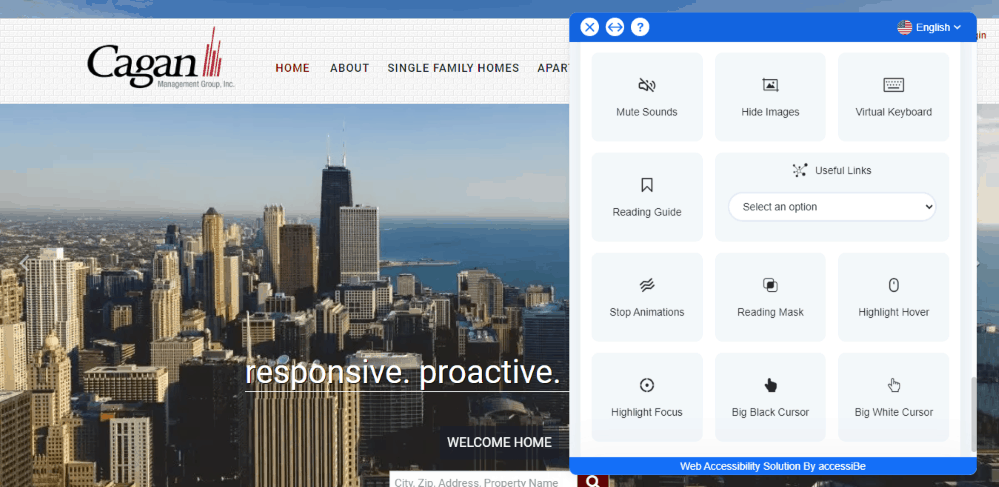
Simplify Your ADA Compliance with accessiBe.
Eliminate the coding hassle, long turnarounds, and high redesigning costs to achieve web accessibility. Moreover, give yourself the peace of mind of knowing you’re avoiding ADA violations and possible legal problems.
Use efficient, all-in-one solutions such as accessiBe to fulfill the ADA requirements and guarantee your compliance at all times.
As you do, you build strong client relationships and a socially inclusive brand image for your company that ensures round-the-clock accessibility for your disabled clients.
